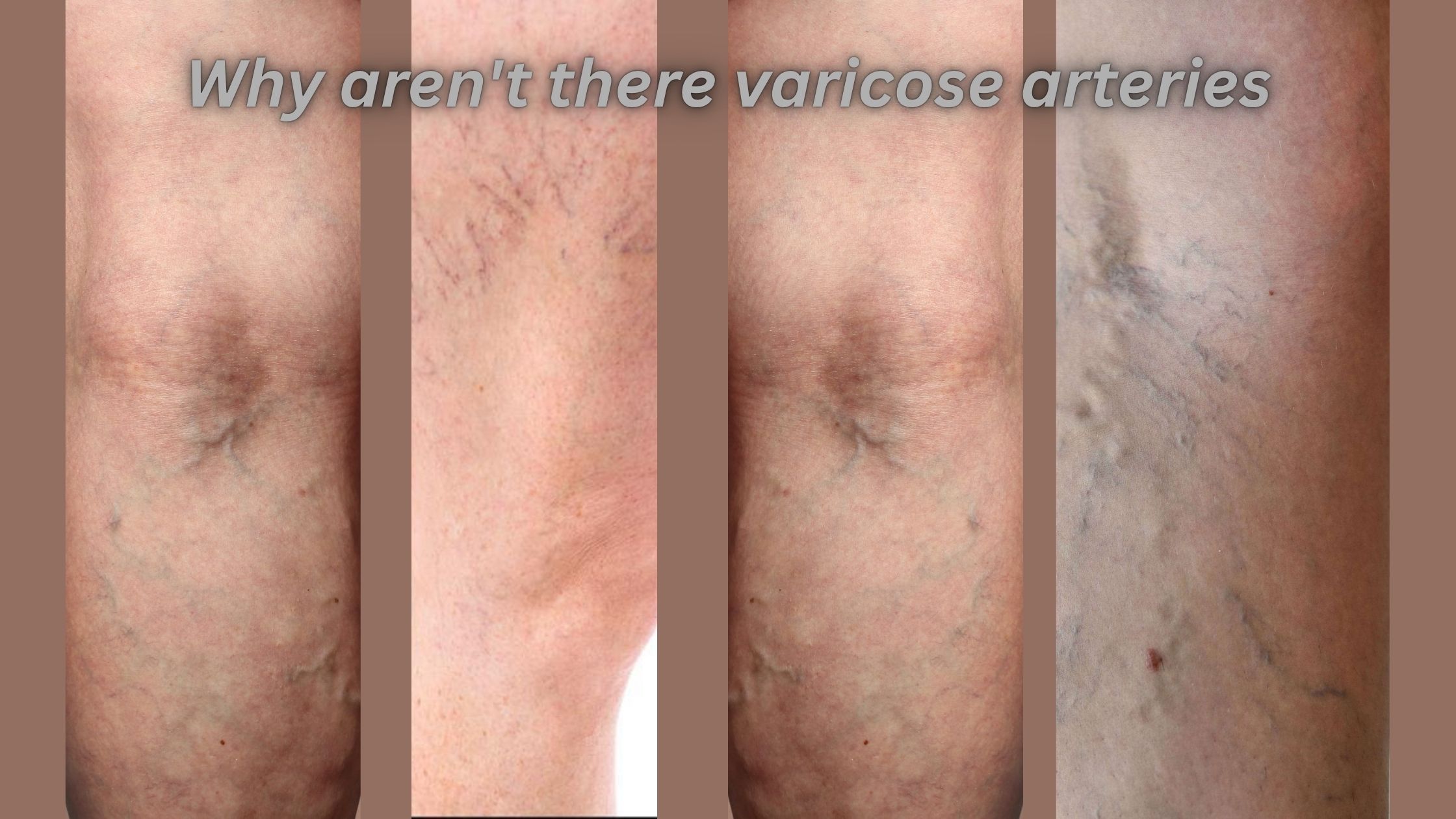When discussing vascular health, a question often arises in mind, why do we hear about varicose veins but not varicose arteries? Symptoms of vein leakage symptoms and leaking veins in legs are usually associated with the veins, yet the arteries are saved from such problems.
This article explores the anatomical and physiological causes behind the incident, and highlights why the varicose arteries are not a subject of medical concern, while also addressing vein-related conditions and their symptoms.
What Are Varicose Veins?
Varicose veins are increased, folded veins that usually appear on the legs and feet. They are when the nerves are weak or damaged, thereby causing blood to pool and veins to bulge. Symptoms include pain, swelling and visible rope-like veins. Leaking veins in legs is a term that is often used to describe defective valve veins, which increases blood leakage and pressure.
Varicose veins are a result of CVI, where veins struggle to bring back blood to the heart. This condition is more common in women, older adults, and those with a family history of vein issues. Lifestyle factors like standing/sitting for a long time or obesity can also contribute to it.
Why Don’t Arteries Become Varicose?
To understand why varicose arteries don’t exist, we have to check the difference between veins and arteries.
Structural Differences
The structure of arteries and veins varies according to their functions. The arteries carry blood with oxygen from the heart to the body under high pressure. Their walls are thick, muscular and flexible to withstand this force. Veins, on the other hand, transport blood back to the heart under lower pressure, so their walls are thin and less flexible.
The robust structure of arteries makes them resistant to the kind of stretching and bulging seen in varicose veins. If arterials are also weak, there is more likely to develop an aneurysm (a localized bulge) instead of varicose status.
Blood Pressure Dynamics
The arteries work under high pressure due to the pumping of the heart. This constant force keeps the blood flowing smoothly, which stops the deposition of blood. However, the veins depend on muscle contraction and unilateral valves to flow blood against gravity, especially in the legs. When these valves fail, the blood may flow backwards, causing vein leakage symptoms such as swelling, heaviness, or skin color (discoloration). The low pressure environment in the veins makes them sensitive to damage, while the high pressure system of the arteries protects them from similar issues.
Valve Functionality
Veins, particularly in the legs, have valves to prevent backflow. Over time, these valves can be weak, causing a position like leaking veins in legs. The arteries do not have valves because the heart’s pressure ensures unidirectional blood flow. Without the valve, the arteries are unlikely to be the same kind of dysfunction that causes varicose veins.
Location and Gravity
Most varicose veins are in the legs, where it becomes difficult for the veins to bring blood back to the heart due to gravity. Arteries, carrying blood away from the heart, aren’t affected by gravity in the same way. This reduces the likelihood of arteries developing conditions akin to varicose veins.
Common Vein Conditions and Symptoms
While arteries avoid varicose issues, veins are vulnerable to several conditions. Recognizing vein leakage symptoms is crucial for early intervention.
- CVI
- DVT, Spider Veins
Vein leakage symptoms to watch for include:
- Heaviness/aching in the legs
- Swelling, especially after prolonged standing/sitting
- Visible, folded veins
- Skin discoloration or ulcers
- Itching/burning sensations
Why Vein Health Matters
It is necessary to maintain healthy veins for complete vascular health. Unlike arteries, which are less prone to visible conditions, veins are more sensitive to damage. Untreated varicose veins or leaking veins in legs can lead to complications such as ulcers or blood clots.
Here are some tips to support vein health:
- Daily exercise, like walking/swimming, promotes blood circulation.
- Legs elevation above heart level reduces pressure on veins.
- These improve blood flow and alleviate vein leakage symptoms.
- Overweight pressure on the veins, which makes the situation worse.
- Change the positions to prevent blood accumulation.
Artery Conditions to Be Aware Of
Although varicose problems do not develop in the arteries, they are not free of problems. Common arterial problems include:
- The deposition of plaque narrows the arteries, which disrupts blood flow. (Atherosclerosis)
- Weak arterial walls can emerge and possibly rupture. (Aneurysms)
- Reduction of blood flow to organs can cause pain and mobility problems (Peripheral Artery Disease).
Diagnosis and Treatment for Vein Issues
If you suspect leaking veins in legs or varicose veins, doctors may use ultrasound to assess blood flow and methodology (function) of valves. Treatment options include lifestyle changes to medical procedures:
- Sclerotherapy
- Laser Therapy
- Vein Stripping
- Radiofrequency Ablation
Prompt treatment can prevent complications and improve life quality.
Myths about Varicose Veins
There are many misconceptions about varicose veins and vascular health:
Myth 1: Varicose veins are only cosmetic: While they can be unsightly, they often indicate underlying issues like vein leakage symptoms.
Myth 2: Only old people have varicose veins: They can affect younger adults, especially during pregnancy or with genetic predisposition.
Myth 3: Sitting by crossing the legs can cause varicose veins: There’s no evidence to support this claim.
Conclusion
The absence of varicose arteries boils down to their structural and functional differences from veins. Arteries’ thick walls, high-pressure environment, and lack of valves make them resistant to the bulging and pooling seen in varicose veins. However, veins remain susceptible to conditions like leaking veins in legs, with vein leakage symptoms signaling potential issues. You can reduce the risk of complications, giving priority to the health of the veins through lifestyle changes and initial intervention. If you see symptoms like swelling, pain or visible veins, seek medical advice immediately. Although varicose arteries cannot be a matter of concern, maintaining overall vascular health is the key to a healthy and active life.
